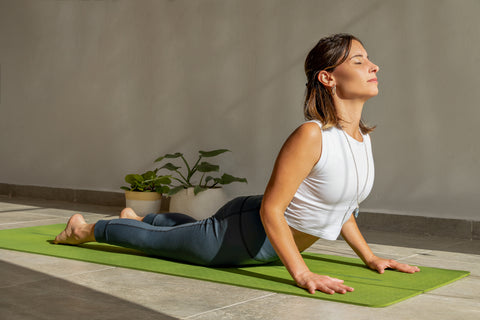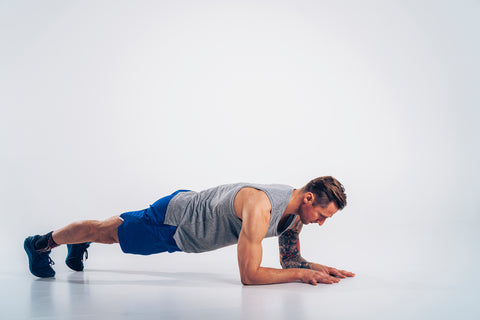Natural Ways to Reduce and Prevent Lower Back Pain

If you suffer from back pain, you’re not alone. 80% of Americans experience back pain at some point in their life. It is the third most common reason for missed work.
The spine is a complex arrangement of bones, ligaments, muscles, nerves and disks. Even the smallest injury or misalignment can result in crippling pain, but there are several simple things we can do to prevent or reduce back pain:
1. Heat - Heating pads will help to relax the muscles and prepare them for stretching. Heat is especially effective with pain resulting from tight or tired muscles.
2. Stretches - Specifically stretches that lengthen the spine and backward bending stretches typically relieve low back pain. This is because the most common cause of low back pain is disk compression. Between each of the vertebra are fluid-filled disks. When a disk is compressed, it can put pressure on the surrounding nerves causing numbness, tingling, pain and muscle spasms. Any movement that allows the spine to relax and lengthen will often lead to relief as the pressure on the nerves is reduced. Swimming, using an inversion table, dangling from a pull up bar… anything that allows spine to get a break from gravity and stretch should offer some relief. “The cobra” pose is an excellent stretch for low back pain.

3. Strengthen your core - Strengthening the abdominal and back muscles will help to support and stabilize the spine, resulting in reduced pain and decreasing the chances of significant injuries. One simple thing you can do is learn to engage your core throughout the day. Stand tall and pull your bellybutton back towards your spine. Think of the muscles of your waist and abdomen pulling inward like a corset. The plank is one of the best exercises for strengthening your core. The bird dog pose (shown at top) is an excellent exercise to strengthen your core and behind.

4. Proper lifting - Bend at the knees not the waist or hips. This applies to everything, whether picking up a napkin or heavy furniture, bend at the knees when you need to pick something up. Never twist and lift. And when you’re exercising, be sure to balance your forward bending exercises with plenty of backward bending exercises. Too much forward bending can lead to disk compression or worse.
5. Avoid Sitting for prolonged periods - If you must sit, be sure it’s in a chair that supports your spine and keeps you in proper alignment and take plenty of stretch breaks. You may need a footrest to keep your hips and knees level. Avoid sitting in a hunched position for long periods of time. Make sure you get up and move around at regular intervals to alter your body position. This applies to long road trips as well.
6. Sleep - A good mattress, and good sleep posture. Avoid sleeping on your stomach. If you sleep on your side, place a pillow between your legs. If you sleep on your back, keep a pillow under your knees.
7. Back Brace/Support Belt - Sometimes you need a little extra support. If you are on your feet a lot or doing strenuous lifting or repetitive movements, some extra back support can really help to prevent or reduce any soreness. There are plenty of options available online from discrete lower back support to upper back support, to full back support.
8. Mirica
Mirica contains two natural but powerful active ingredients: Palmitoylethanolamide (PEA) and Luteolin.
PEA has been shown through human clinical trials to reduce pain and inflammation.* It plays an important role in tissue repair.* Luteolin is a potent antioxidant that has been shown to enhance PEA’s anti-inflammatory effects.*
This is not a substitute for medical advice. If you are experiencing back pain, discuss your options with your doctor.
1. Chou R, Huffman LH; American Pain Society; American College of Physicians. Nonpharmacologic therapies for acute and chronic low back pain: a review of the evidence for an American Pain Society/American College of Physicians clinical practice guideline. Ann Intern Med. 2007 Oct 2;147(7):492-504. doi: 10.7326/0003-4819-147-7-200710020-00007. Erratum in: Ann Intern Med. 2008 Feb 5;148(3):247-8. PMID: 17909210.
2. Back Pain Facts and Statistics. https://handsdownbetter.org/health-and-wellness/back-pain-facts-and-statistics/
* The statements on this website have not been evaluated by the Food and Drug Administration. These products are not intended to diagnose, treat, cure or prevent any disease.





